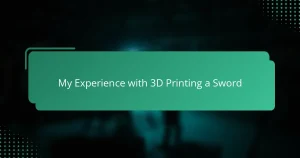Key takeaways
- Science fiction props enhance storytelling by combining creativity and technology, transforming ordinary objects into futuristic artifacts.
- Common types include energy weapons, intricate gadgets, and wearable items, all of which deepen the immersion in sci-fi narratives.
- Lightweight materials, like plastics and foam, along with effective use of paint and lighting, are crucial for creating believable props.
- The process of modifying items, such as Nerf guns, involves careful disassembly, reshaping, and the addition of unique details to achieve a convincing sci-fi aesthetic.

What Are Science Fiction Props
Science fiction props are objects crafted to bring futuristic worlds and imaginative stories to life. In my experience, these props aren’t just decorations—they’re gateways to other realities that spark curiosity and wonder. Have you ever held a prop that made you feel like you were part of an extraordinary universe?
What fascinates me most about sci-fi props is how they blend creativity with technology. From sleek ray guns to intricate gadgets, these items often push the boundaries of what we consider possible. I remember the thrill of transforming an ordinary object into something that looks like it could belong on a spaceship or an alien planet—it’s like giving the mundane a new story.
Ultimately, science fiction props do more than support narratives; they invite us to imagine different futures and question the limits of human invention. Isn’t that what great storytelling is all about? These props become symbols of possibility, making the fictional tangible and inspiring minds, including my own.

Types of Science Fiction Props
When I think about the types of science fiction props, the variety always surprises me. There are the classic energy weapons like ray guns and blasters, which instantly transport you to futuristic battles. Have you ever noticed how just holding one can make you imagine epic space duels or covert missions?
But it’s not just about weapons. Sci-fi props often include intricate gadgets—control panels, holographic devices, or alien artifacts—that add layers of mystery and depth to the story. I’ve spent hours tweaking simple parts to look like advanced tech, and each detail adds to the illusion of another world.
Then there are wearable props: helmets, armor, or communication devices that help immerse both the actor and the audience in the narrative. I find these pieces fascinating because when you put them on, it’s like stepping into a character’s shoes, feeling the weight of their futuristic reality. Doesn’t that kind of transformation make the creative process all the more rewarding?
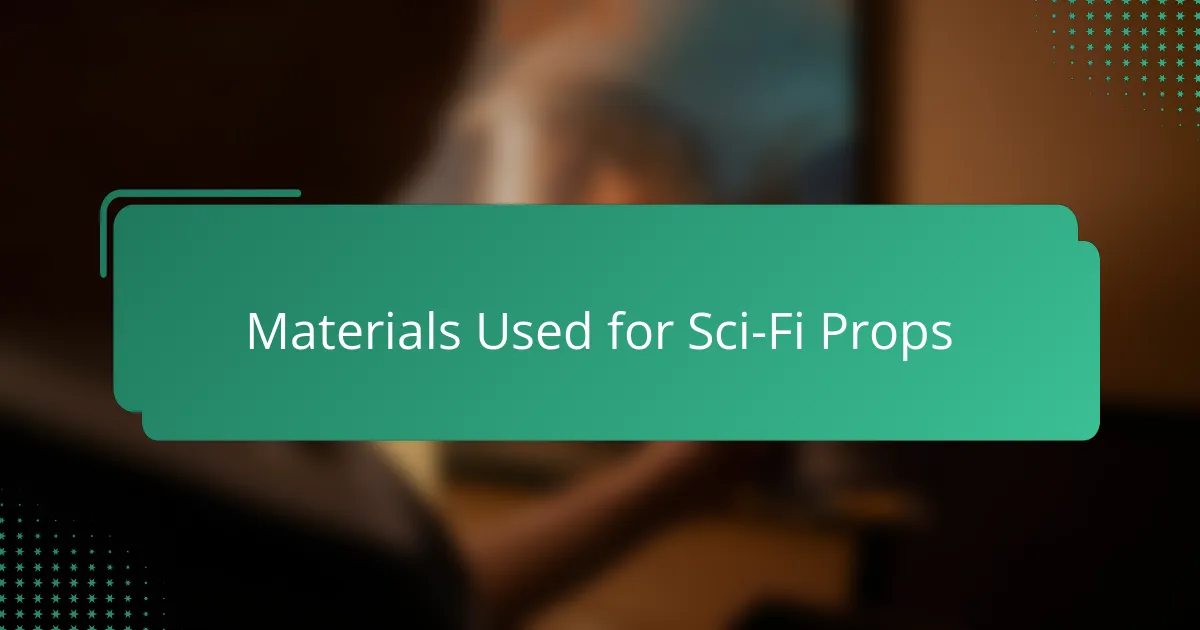
Materials Used for Sci-Fi Props
When it comes to materials for sci-fi props, I’ve learned that lightweight plastics and foam are my go-to choices. They’re easy to shape and paint, which is crucial when I want a prop to feel both futuristic and functional without weighing me down during a shoot or display. Have you ever tried holding something heavy for hours? Trust me, comfort matters more than you might think.
Sometimes, I mix in metallic paints or foil to mimic sleek metal surfaces. It’s amazing how a simple spray can transform foam into what looks like alien alloy. That sense of turning ordinary craft supplies into something otherworldly always excites me—it’s like a small magic trick.
I’ve also found that incorporating LED lights or transparent acrylic pieces adds an undeniable sci-fi vibe. When the prop glows or seems to pulse with energy, it draws people in and sells the illusion instantly. Don’t you agree that lighting can make all the difference between a prop that’s just a toy and one that truly belongs on a starship?
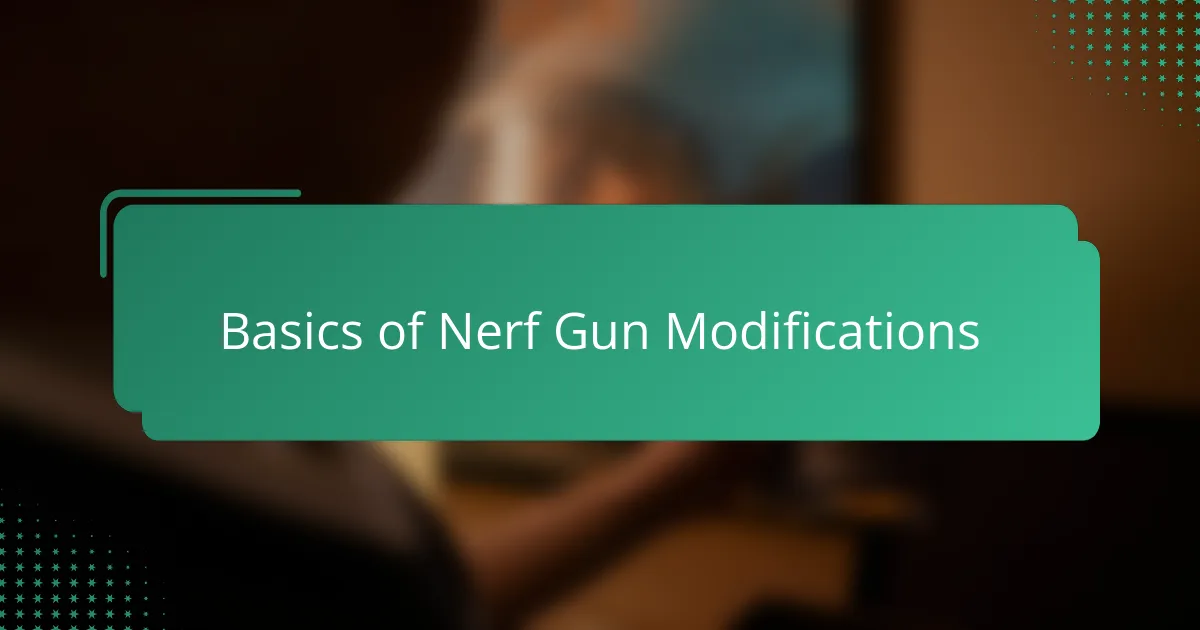
Basics of Nerf Gun Modifications
Modifying a Nerf gun is where my sci-fi creativity really begins to take shape. At its core, it’s about understanding the basics: removing the original parts that feel too toy-like and reinforcing the structure so it can handle added details. Have you ever taken something familiar and wondered how to make it look completely unrecognizable yet believable? That’s exactly what the first steps of modding are about.
I’ve learned that even simple adjustments like sanding down surfaces or sealing seams can make a huge difference. It’s like giving your Nerf gun a blank canvas to build upon. Without that groundwork, adding futuristic elements feels like putting a costume on a skeleton—it just doesn’t hold up.
And let’s not forget about the internal mechanics, which often get overlooked. While I’m not always aiming for full performance mods, understanding the trigger and dart-feed system helps me decide what parts to keep and where to add sci-fi flair without compromising basic function. Don’t you find that blending form and function makes the project more satisfying?
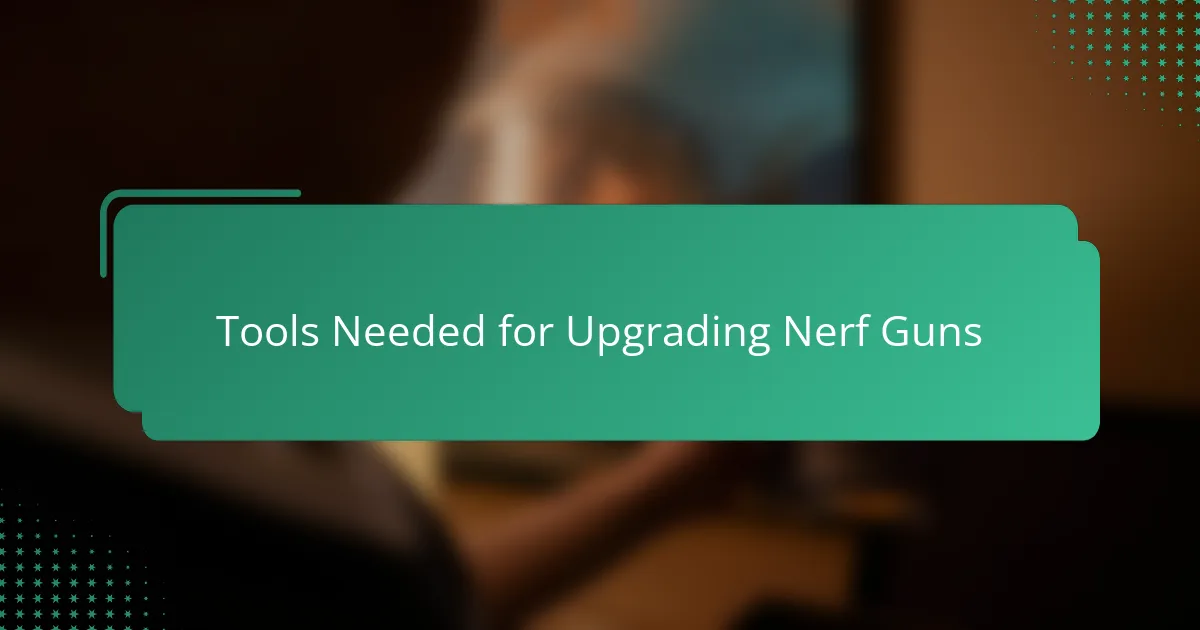
Tools Needed for Upgrading Nerf Guns
Having the right tools can make all the difference when upgrading a Nerf gun into a sci-fi prop. For me, a good set of screwdrivers is essential to carefully dismantle the gun without damaging any crucial parts. I’ve spent frustrating hours trying to pry open cases with the wrong tools—trust me, having precision screwdrivers saves both time and nerves.
Beyond the basics, I always keep sandpaper and a rotary tool handy. Sandpaper helps smooth edges and create surfaces that are perfect for painting or attaching new pieces. The rotary tool, with its various attachments, is like a mini factory in your hand—it lets me carve, cut, and shape plastic in ways simple tools can’t. Do you know that satisfying feeling when a rough edge suddenly becomes sleek and seamless? That’s when the transformation really starts to feel real.
And then there’s the paintbrushes and adhesives. I’ve tried everything from super glue to hot glue guns depending on the material and the part I’m attaching. Choosing the right glue is a bit of a science—too strong, and you risk melting delicate plastic; too weak, and the whole thing falls apart mid-shoot. What I’ve learned is that patience and experimentation with these tools bring the prop to life in ways that no off-the-shelf toy ever could.
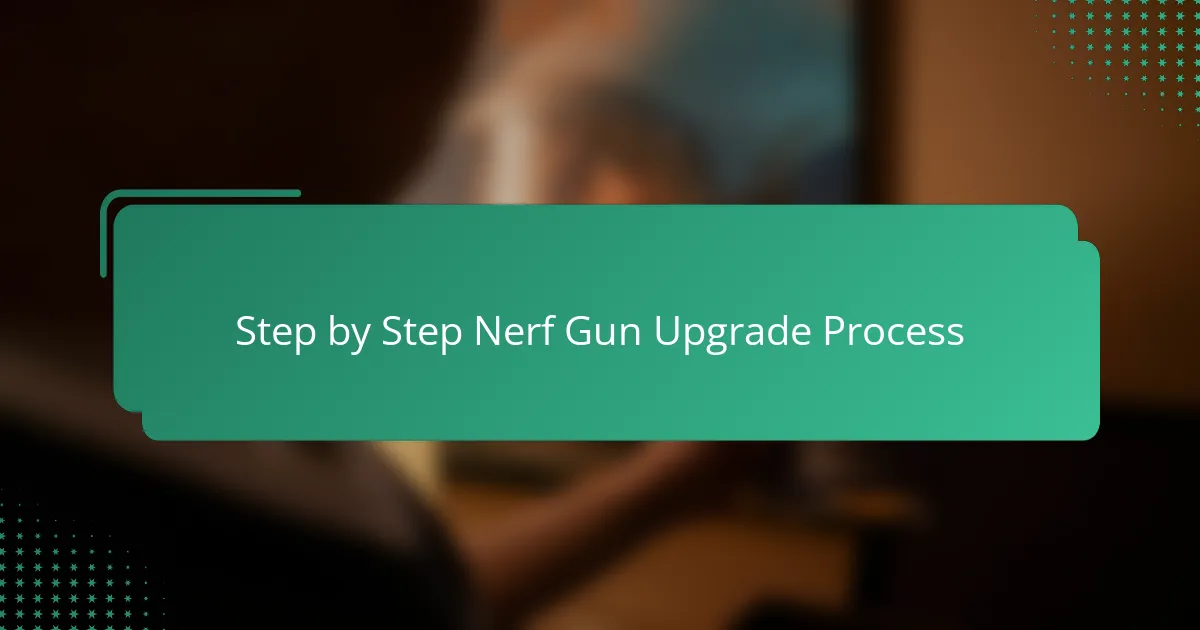
Step by Step Nerf Gun Upgrade Process
The first step I always take in upgrading a Nerf gun into a convincing sci-fi prop is thorough disassembly. This process isn’t just about taking it apart; it’s about understanding the structure beneath the surface. Have you ever peeled back layers of something familiar and discovered new possibilities? That’s exactly the moment when the fun begins—I carefully remove non-essential parts to create a blank slate that’s ready for transformation.
Once disassembled, I focus on reshaping and smoothing the exterior. Sanding down curves and seams might seem tedious, but it’s where the Nerf gun starts losing its toy-like appearance and gains a sleek, otherworldly vibe. I remember one project where the simple act of sanding made the difference between a plastic plaything and a prop that felt like it belonged on a starship bridge. Suddenly, you see the potential emerging beneath your fingertips.
From there, attaching bespoke details comes next—think extra panels, futuristic scopes, or engraved patterns using lightweight materials. It’s a bit like quilting a new skin over the original frame. Have you tried layering elements that tell a story just through their design? Those added features don’t just change how the prop looks—they give it character and a backstory floating in some distant galaxy, which is truly the heart of sci-fi crafting.


